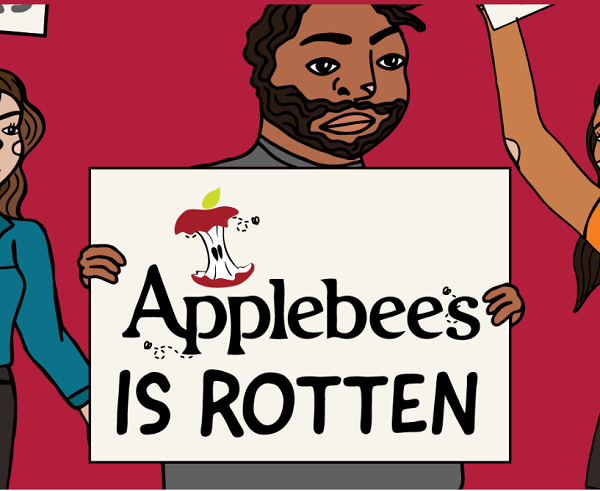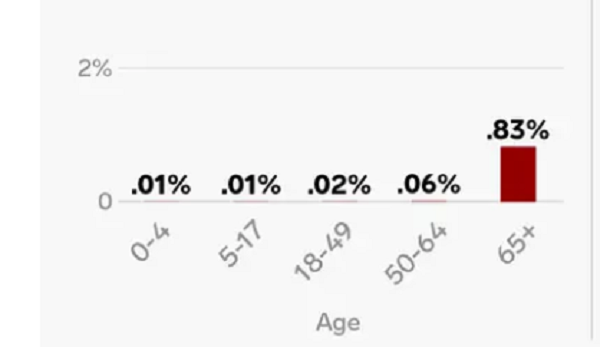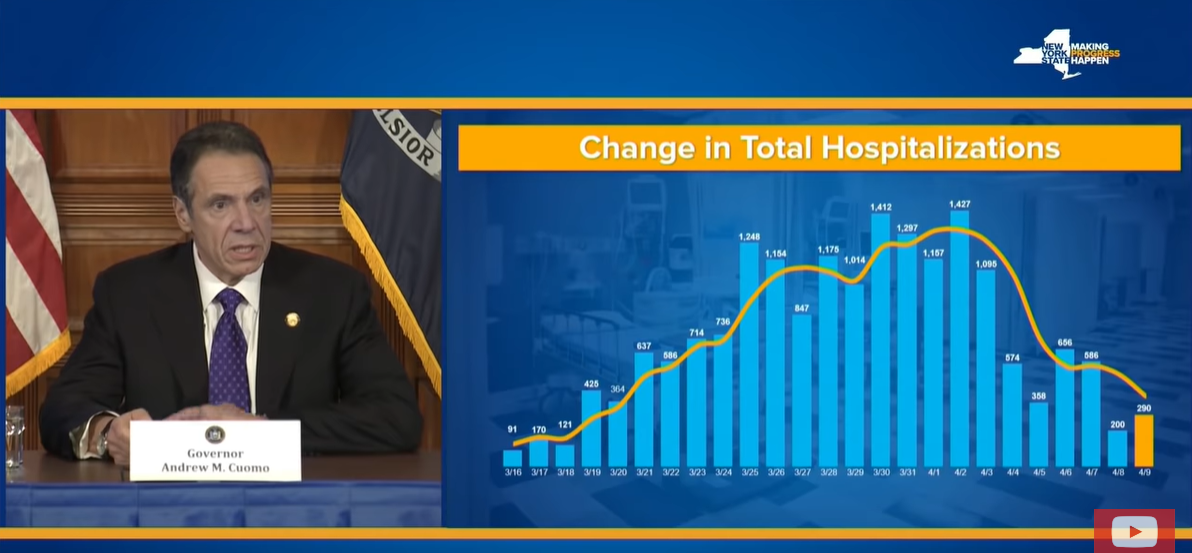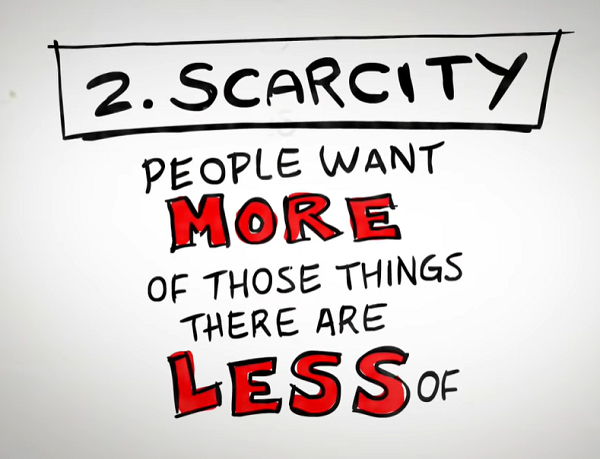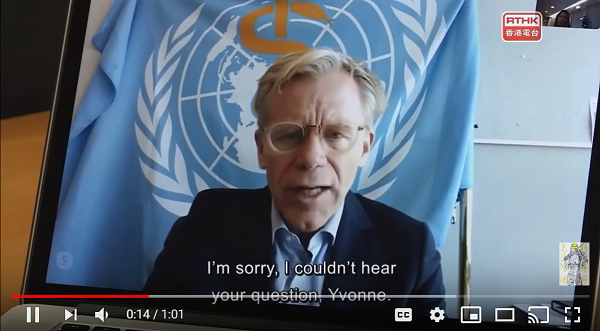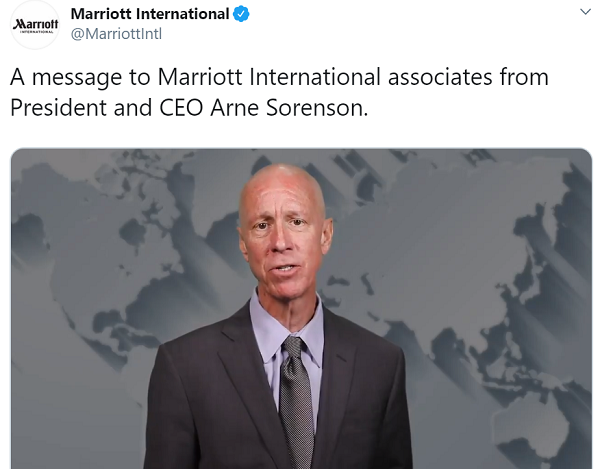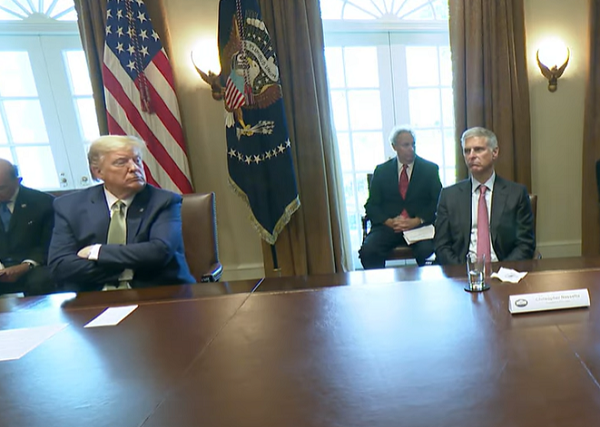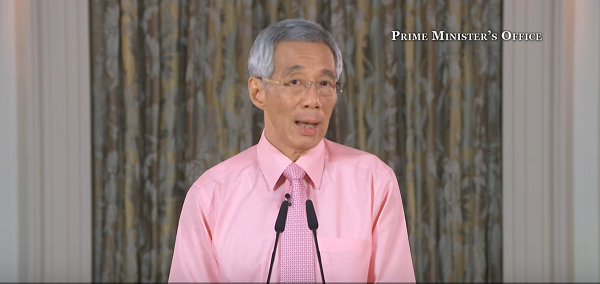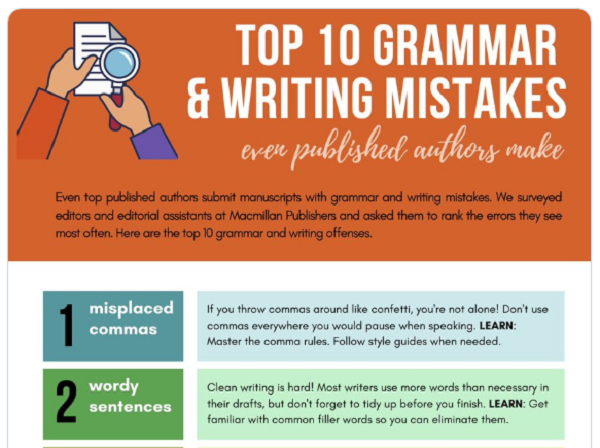Lysol Disputes Claims of Cure
During his press conference, President Trump questioned whether disinfectants could be used internally to fight the new coronavirus:
“I see the disinfectant that knocks it out in a minute, one minute. And is there a way we can do something like that by injection inside, or almost a cleaning? Because you see it gets inside the lungs and it does a tremendous number on the lungs, so it would be interesting to check that.”
The president later said, “I was asking a question sarcastically to reporters like you just to see what would happen.” But Lysol executives are concerned that people may take the idea seriously and try to treat themselves. Reckitt Benckiser, which makes Lysol products, issued a statement, “Improper Use of Disinfectants.”
Discussion:
Watch the president’s comment during the press conference. What’s your view of his speculation?
Analyze the Lysol maker’s response. What works well, and what could be improved? What is appropriate or inappropriate for a brand’s parent to dispute the president’s claim in this way?
Employees Seek Better Benefits from Applebee's and IHOP
Employees of Applebee’s and IHOP are asking for better benefits from the restaurants’ parent company, Dine Brands.
The group’s website, Applebeesisrotten, paints a dire picture of the impact of the pandemic on restaurant workers and asks people to sign their petition for “comprehensive paid sick leave, paid family and medical leave, and income relief to all works.”
A tweet posted on April 22 indicates that company executives haven’t responded to the group’s demands.
Discussion:
Analyze the group’s use of persuasive strategies on the website. How well do they balance logic, emotion, and credibility? What suggestions for improvement would you offer?
The petition shows less than 7,000 signatures as of today. What, if any, effect might this have on the executives’ response.
Should the executives respond? If so, how?
Avoid Trite Customer Service Expressions
Consultants in online communication advise writers to avoid standard customer services phrases that could be off-putting during the COVID-19 pandemic:
“We regret any inconvenience this may have caused.”
“Well share your feedback with the appropriate department.”
“[Insert topic] is extremely important to us.”
“Our records show…”
“As per your request…”
“Is there anything else I can help you with today?”
Discussion:
I would argue that these expressions should be avoided any time. What are your thoughts?
Do you find any of these particularly annoying?
What could you say instead of each of the above?
Judge Requests Professional Attire
I’ll admit it: I’ve been wearing leggings or jeans for the past five weeks. I’m guessing that’s common, but some people are taking attire for online meetings to an extreme. Stories of people showing up shirtless or in bed for Zoom meetings are causing leaders to provide more guidance for what to wear on video.
A judge in Broward County, Florida, ordered lawyers to dress for video meetings as they would in court. Judge Dennis Bailey laments the current attire and attitude:
“It is remarkable how many ATTORNEYS appear inappropriately on camera. We've seen many lawyers in casual shirts and blouses, with no concern for ill-grooming, in bedrooms with the master bed in the background, etc. One male lawyer appeared shirtless and one female attorney appeared still in bed, still under the covers. And putting on a beach cover-up won't cover up you're poolside in a bathing suit. So, please, if you don't mind, let's treat court hearings as court hearings, whether Zooming or not.”
The judge also offers advice for Zoom hearings, which he says take longer and require more planning to present exhibits.
In response, the chief judge for the district sent his own letter, softening the tone and direction:
“As Chief Judge I was unaware of this letter going out until I started to receive inquiries. As far as decorum in zoom hearings we have not seen the need to establish hard and fast rules. We certainly appreciate everyone being polite, professional and not disruptive during the hearings. Please remember most all of these hearings are open to the public and thus everyone, including judges and general magistrates, should dress and behave accordingly.“
Judge Bailey image source. Zoom in bed image source.
Discussion:
Read the full original letter and the chief judge’s response. How do the messages compare in terms of audience analysis, tone, content, and organization?
What’s your view of Judge Bailey’s letter: appropriate, off-base, or something else?
What do you observe on Zoom meetings? Are people presenting themselves less professionally? What’s your perspective on this topic?
What Not to Say
An article posted on Medium, “11 Things Socially Aware People Don’t Say,” offers good advice during this crisis—and for other times. Michael Thompson suggests avoiding the following: “I told you so,” “I know how you feel,” “Good luck with that,” “It’s not my fault,” “It’s all in your head,” “That was stupid,” “You always/You never,” “Everything happens for a reason,” “As I said before,” and “With all due respect.”
I would add one: “Frankly” or “Honestly.” When people introduce a statement this way, I find myself disbelieving them and questioning what they say typically. Without the preface, I’ll assume you’re speaking frankly and honestly.
Discussion:
Many of these phrases have a positive or harmless intent, but how could the impact be harmful?
What could you say instead of these expressions?
What would you add to this list?
Improving Column Charts
So many charts about COVID-19 could be improved. Here’s one from a Business Insider article, which compares death rates for the flu and COVID-19.
Discussion:
What issues do you see in the graphic? (Hint: Check the x axis, and describe what the percentage on the y axis represents.) How would you fix the problems?
What are the consequences of designing charts in this way?
Find another recent chart to analyze. In what ways does the graphic convey information accurately, and how does it fall short?
Governor Cuomo's Leadership
A Wall Street Journal article analyzes NY Governor Cuomo’s leadership during the coronavirus pandemic. Crisis communication experts conclude that, although he’s not a naturally gifted orator, he is doing what the public needs now.
People appreciate the governor’s focus on facts and his direct style as well as his discussions of emotion and his brother’s illness, which “humanize” him.
The article sites Cuomo’s current popularity: “Gov. Andrew Cuomo’s job-performance rating soared in March to its highest level ever, according to a poll conducted by the Siena College Research Institute.”
Performer Randy Rainbow produced a funny video, “ANDY!” to the tune of “Sandy” from the musical Grease about his appreciation.
Discussion:
Read the article for other conclusions about the governor’s leadership style. With which ideas do you agree and disagree?
What other examples have you seen of people stepping up when the situation required them to be leaders? How did they do?
Message from Zoom CEO
People who never heard of Zoom are now relying on the company to provide flawless service, but of course we experience problems. In a blog post, CEO Eric Yuan describes how Zoom use has “ballooned overnight” and what the company has done to meet demand and improve the service.
Yuan also expresses gratitude to Zoom users at the end of the post, demonstrating business communication principles and leadership character:
Transparency has always been a core part of our culture. I am committed to being open and honest with you about areas where we are strengthening our platform and areas where users can take steps of their own to best use and protect themselves on the platform.
We welcome your continued questions and encourage you to provide us with feedback – our chief concern, now and always, is making users happy and ensuring that the safety, privacy, and security of our platform is worthy of the trust you all have put in us.
Together, let’s build something that can truly make the world a better place!
Discussion:
Analyze the blog post: audiences, communication objectives, organizational structure, writing style, etc.
What business communication principles does the blog post illustrate? What improvements would you suggest?
What leadership character dimensions are illustrated in this example?
Misleading NY Covid-19 Chart
Thanks to Carl Quintanilla for posting this example of a misleading chart. New York Governor Andrew Cuomo has been lauded for his leadership during the coronavirus crisis, yet critics say one of the mainstay charts in his news conferences shows a skewed story.
When he shows this chart, Governor Cuomo describes, the decreasing numbers of new hospitalizations. The chart title is clear: “Change in Total Hospitalizations.” But what does the visual imply?
Similarly, he shows “Change in ICU Admissions” (approx.00:35 in the video).
Discussion:
Watch the first minute of the news conference. Is he clear, or could he be clearer in his explanation?
What’s your view of the two charts? Are they misleading? What are the possible consequences of showing the data in a misleading way?
How, if at all, should these charts be changed?
Luckin COO Fabricated Sales Data
Luckin’ Coffee, China’s largest coffee chain, is suffering the consequences of publishing false sales numbers. Ernst & Young discovered the misconduct, which took place in 2019, during an audit, concluding that “management personnel engaged in fabricated transactions which led to the inflation of the Company’s income, costs and expenses.” An investigation blames the chief operating officer and others.
A report details “the fraud and the fundamentally broken business,” including “smoking gun” evidence and “red flags.” The anonymous authors compare video recordings of store foot traffic to reported sales.
In response to the news, Luckin’s stock declined between 75 and 80%. Starting in February, when the anonymous report was made public, the company has been posting notices about the situation on its website.
Discussion:
Analyze the anonymous report, including the audiences, objectives, organization, writing style, etc. What works well, and how would suggest that the writer improve the report?
How well did the company address concerns? Begin with the first response in February.
What leadership character dimensions does this situation illustrate?
Does Persuasion by Scarcity Work?
Business communication students may learn about Robert Cialdini’s Six Principles of Persuasion, including scarcity. For example, a online retailer indicates “Only two left!” or “Only one left at this price!”
In a Wall Street Journal article, a researcher questions whether the “quantity scarcity” strategy works under all conditions. Dr. Christopher Tang explains new research:
“…scarcity messages work best with time-sensitive and perishable products such as hotel rooms or plane tickets, as well as unique items like collectibles or limited editions.
“They are less effective with durable goods such as home-improvement products or kitchenware, in part because they can give shoppers the impression that the product is being pushed because it is undesirable, lower quality, obsolete or discontinued. And in the case of items typically bought in larger quantities, such as partyware, lightbulbs and batteries, we found that scarcity messages can actually hurt sales by making shoppers believe they won’t be able to buy as much of a product as they want.”
To use the scarcity principle effectively, Dr. Tang suggests that retailers highlight quality, promote urgency, and offer product bundles
Discussion:
When have you seen the quantity scarcity at work? Did it persuade you to purchase something?
Think of a specific product that you might buy. How would you recommend that retailers use this strategy effectively to move remaining products?
WHO Official Bungles Interview
World Health Organization (WHO) senior adviser Bruce Alyward wanted to avoid a reporter’s question about Taiwan becoming a member of the organization. A video of the interview shows an awkward exchange, with Alyward remaining silent (but we still see him moving and hear sounds), saying “Sorry, I couldn’t hear your question,” asking the reporter to move onto another question, and then, finally, ending the call. During a follow-up call, Alyward refers to China and then abruptly ends the call.
Taiwan has had good success in controlling COVID-19, and the government claims to have warned the WHO back in December 2019 about the contagion.
As of today, Alyward’s name is removed from WHO’s website listing advisers to the organization.
Discussion:
What is a better way for Alyward to have handled the reporter’s question?
Why do you think the WHO ignored warnings from the Taiwanese government?
Marriott CEO Demonstrates Authenticity
A Forbes article calls him an “authentic leader” and applauds his video about the business. Marriott CEO Arne Sorenson begins by talking about his appearance: he is undergoing treatment for pancreatic cancer.
Sorenson gives the bad news directly: the company hit from COVID-19 is worse than the impact from 9/11 and the 2009 financial recession combined. He compares the worst quarter in the company’s history—about a 25% revenue decline—to the almost immediate 90% decline today.
Towards the end of the video, Sorenson is visibly emotional as he talks about employees losing their jobs.
Discussion:
What principles of delivering bad news does Sorensen use in the video?
How well does Sorenson balance emotional appeal, logic, and credibility in this message?
In addition to authenticity, what other leadership character dimensions does Sorenson demonstrate?
Too Many COVID-19 Emails?
A Fast Company article criticizes brands for sending emails without real connections to customers. Consumers are getting annoyed at seemingly random emails from companies that happen to have their email. The author offers this advice:
The best way that brands should be responding is if they actually have something to say or contribute. Our patience for marketing fluff is low at the best of times, but now it’s positively toxic.
Discussion:
Think about the emails you have received recently. Which were more useful or meaningful to you than others? Why is that the case?
What advice do you have for companies debating whether and what types of emails to send?
FreshDirect Message
Dear FreshDirect Team Members, Suppliers, and Customers,
In the past few weeks, our community has come together in an extraordinary way as we navigate this ‘new normal’ of everyday life for the foreseeable future. Our team members, our suppliers, and our customers are all part of this evolving conversation so I thought it appropriate to address everyone together.
Thank you, first and foremost, to our remarkable FreshDirect employees who are receiving, preparing, packing and delivering food during this extremely challenging time, and working around the clock to serve even more customers. Your dedication and perseverance is inspiring, and I’m privileged and proud to be on your team. You are true heroes.
Thank you to all of our suppliers, particularly our food suppliers on farms, boats and ranches, who, even with their own challenges, tell us that they will stop at nothing to not let us down. Grocers are now being called heroes, but know that we consider all of you heroes as well – boots on the ground, ensuring that the quality food that you grow continues to roll.
Thank you to our loyal customers, for trusting us to serve you and your family during this unimaginable time, and for continually asking about our team members, sharing encouragement and appreciation for all they are doing to provide food. The shift of virtually all food consumption into the home has strained the entire food industry, and we are all working tirelessly to address the resulting shortage in time slots.
Together, as a community, we are going to be doing even more to help others.
In just the last 10 days, the FreshDirect customer community has donated over $75,000 to the NY Common Pantry, an organization that for years has been helping others and now needs a helping hand. The FreshDirect employee community continues to support them as well, by packing and delivering thousands of boxes every week.
And this week, we are launching a new public/private partnership with the five NYC Borough Presidents, which we’ve dubbed Operation 5 Borough Food Drive. Starting Tuesday, the FreshDirect team will be donating and packing 2,000 boxes of food staples each weekday. These boxes will be delivered at the direction of each Borough President to those in need, free of charge, thanks to the generosity of our suppliers.
Thank you, and stay healthy and strong.
David
Discussion:
Analyze the message: the audiences, communication objectives, and so on.
What works well, and what could be improved?
How do you assess the message, given criticism of the Fast Company article?
Starbucks Communication
The Starbucks website has been updated regularly with news about the company’s response to COVID-19. Near the top of the page is a link to “At-a-glance: What customers need to know about Starbucks response to COVID-19.”
The big news is that stores will offer only drive-thru service for the next two weeks. In a letter to Starbucks partners (employees), the company promised 30 days of pay whether they work or not.
Discussion:
Analyze both the public website and the letter to partners. Describe the audiences and communication objectives of each.
What organizational structure is used for these bad-news messages?
What does Starbucks do well in its communications? How can communications be improved?
How well does the company balance emotional appeal and logical arguments?
In this post, you see “Starbucks response” on the company’s website and “Starbucks partners” in my text. Neither has an apostrophe. Is that correct?
Tourism CEOs Meet with President Trump
President Trump invited CEOs of major tourism companies to discuss the COVID-19 response.
Hilton CEO Christopher Nassetta began by highlighting issues in the industry:
“Hilton’s been around 100 years -- we’ve never closed a hotel that wasn’t going to be demolished or rebuilding, The bulk of our hotels in the major cities are closing as we speak.”
Nassetta was also complimentary to President Trump and Vice President Pence and said that he wanted to protect employees. The president reassured him that they’ll be up and running soon, although both said the situation is currently a “disaster” “all over the world.”
Discussion:
How would you describe the purpose of this gathering? What are President Trump’s objectives?
Assess each of the CEOs during the meeting. How well did they represent their brand?
Singapore PM Lee Hsien Loong
Two students sent me Singapore Prime Minister Lee Hsien Loong’s news conference as a positive example. I can see why: he gives a model speech, balancing emotional appeal and straight talk. He is proud of Singapore’s response, and yet he is honest about the challenges ahead. The PM also gives examples from other countries and the lessons learned.
Discussion:
What are the strengths of the Prime Minister’s speech?
Assess his delivery skills.
How have leaders in other countries followed this example—or how have they fell short?
Which leadership character dimensions does the PM demonstrate in his speech?
Common Writing Mistakes Infographic
An editor at Macmillan Publishing created an infographic to show the most common mistakes writers make. Misplaced commas, wordy sentences, and run-on sentences get top billing.
The list is interesting and helpful to alert writers to what they should focus on when they revise their work. I wouldn’t try to attack all of these issues on a rough draft.
Of course, some of these mistakes are more serious than others. Although they’re prioritized by frequency, other organizational strategies might be useful.
Advice at the bottom of the infographic is useful for anyone.
Discussion:
Which of these common mistakes are problems in your own writing? How have you been able to tackle them?
How else could this list be organized?
How useful do you find the advice at the bottom? What other advice would you offer writers?
Governor Cuomo's Press Conference
In his second news conference about Coronavirus, New York Governor Andrew Cuomo announced new cases, provided resources, and answered questions.
Discussion:
Assess the news conference. What does Governor Cuomo do well, and what suggestions would you have for him to improve his communication?
What strategies for answering questions does the Governor demonstrate?



